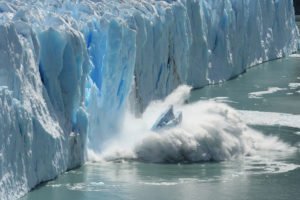Is the “Anthropocene” an exercise in geological bureaucracy or something socially more significant – Victoria University’s Professor Tim Naish writes in Fairfax’s science page – Catalyst.
 An excerpt (read in full):
An excerpt (read in full):
Welcome to the age of the “Anthropocene”. This is to be known as the period of geological history in which human activities left an indelible imprint in the layers of sediment currently forming on the floor of oceans and lakes, and in the snow and ice accumulating in glaciers and ice sheets.
The Anthropocene will end the 11,700 year long reign of the Holocene Epoch, often referred to as the “goldilocks period” of equable climate, during which we enjoyed a very pleasant average global temperature of 14 degrees Celsius – not too cold, not too hot, but just right for human civilisation to flourish.
But hold on, doesn’t it take a lot to end a geological period?
An asteroid crashing into Mexico was required to extinguish the dinosaurs that ended the Cretaceous Period, 65 million years ago. And a major ice age in the Northern Hemisphere was required to start the Pleistocene Epoch 2.5 million years ago, which as it happened also coincided with the origin of our species, Homo sapiens.
So, has our species really done enough to change geological time?